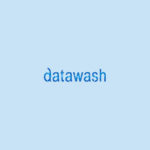
“I gave a letter to the postman, He put it in his sack. Bright in early next morning, He brought my letter back. Return to sender, address unknown. No such number, no such zone.”
Like Elvis said, return to sender mail can be a result of an incomplete address, the addressee doesn’t live at the address, moved out or the person has passed away. It’s not uncommon for letters to be returned to their sender; however this will only happen if there is a return to sender address, usually written on the back of the envelope and the incorrect receiver re-posts the mail.
Within these cases of return to sender it’s often group mail outs, from company databases that have not been updated accordingly from businesses recent change of address. It’s a recurring problem for businesses, which includes unnecessary costs, return on investment, unprofessionalism and lost opportunity which could have led to profitability.
If you have provided a return to sender address and the postman manages to return your mail, you may be able to find a new contact and/or address and try your luck a second time or even third time! You could try scanning through businesses online, looking for their updated details, make phone calls to reception, confirming addresses or personally deliver the mail if you’re still not sure the mail is delivered correctly. However, this is only if you are aware that your mail hasn’t reached your intended destination and in many cases it will often be misplaced, thrown in the bin and never to be seen again. A wasted exercise from all perspectives!
So how do we know if mail being sent to the customer or client is being received by the intended recipient? If we don’t have the mail returned, how can we ensure if it’s getting to the destination we intend it to? The answer is you don’t, unless you can trust that you’ve got the contact and address correct in the first place. Ensuring you have the correct details the first time can guarantee a successful mailing out system that is cost effective and far less time consuming. Trusting that your mail will end up in the correct hands ensures peace of mind in knowing it limits issues such as confidentiality breech, stationery wastage, postage costs and time management.
Datawash Pty Ltd can provide you with a service to ensure your mail reaches the intended destination without being tossed in the bin or ends up in the wrong hands. We can do this by cleaning and updated your customer list prior to your direct mail campaigns to eliminate wastage and reduce postage related costs.
Think of Datawash Pty Ltd as preventative service, as opposed to cleaning up an issue once the damage has already been done.
The Datawash team offer a solution to our clients. We use an advanced address hygiene service for organisations that require an up-to-date direct marketing database. The service we provide is stress-free and uncomplicated to our clients. You simply registerer your details with us, which then creates a profile for your business where you’re able to Login, upload your files for processing. Receive free statistics audits instantaneously for every database checked for accuracy. There are no upfront costs and you only pay for those updated records you decide to download.
Datawash will keep your database up-to-date, quickly identify customers who have moved and ensure their details have been changed accordingly. As a licensee of the Australia Post National Change of Address (NCOA) and various other national databases, we can guarantee the most up to date knowledge of customer movements and a high professional standard of managing client data security.
So then I dropped it in the mailbox
And sent it special D.
Bright in early next morning
It came right back to me.
Even if some of Elvis’s mail didn’t get through, with Datawash you can keep ‘return to sender’ where it belongs, in the past.




